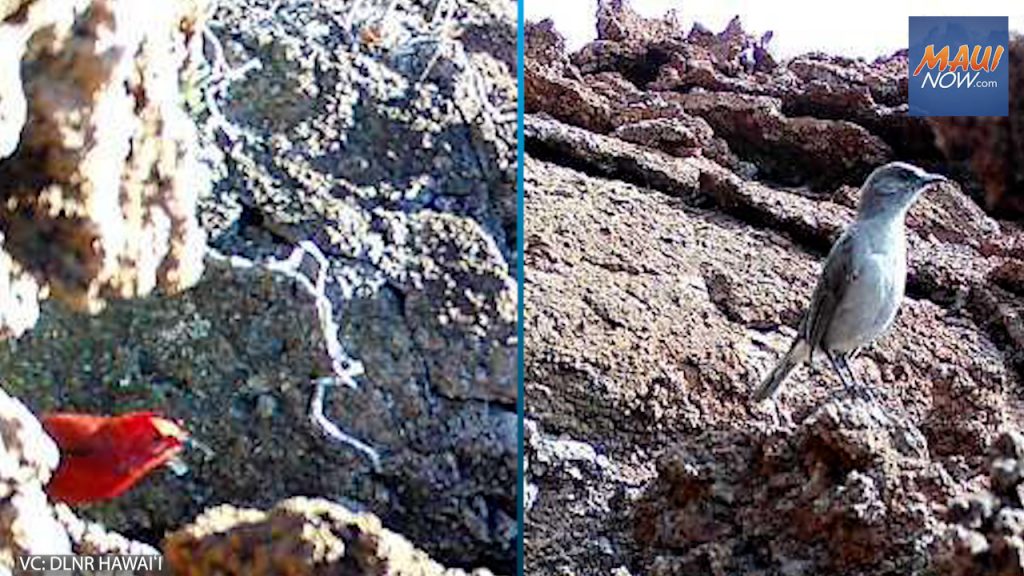Game cameras capture forest birds in eruption zone, ecological impacts assessed

A field team with the state Division of Forestry and Wildlife was at Pu‘u Maka‘ala on Hawaiʻi Island earlier this week to assess ecological impacts of the Mauna Loa eruption on native forest birds.
The team ran mist net lines to capture native forest birds, like the ‘Ōma’o which are found both in the Mauna Loa Forest Reserve and the adjoining Pu‘u Maka‘ala Natural Area Reserve.
Bret Nainoa Mossman, Avian Ecologist for the Hawai‘i Island NAR Program said ‘Ōma’o are exciting birds because they’re one of the few remaining native species that primarily eat fruit. “So they’re really important for spreading native plant seeds around the forest,” he explained in a state news release from the Department of Land and Natural Resources. That becomes doubly important as they spread seeds across lava fields.
“Another cool thing about them is that the population up on Mauna Loa is still hopping around the lava right near the active fissure. They’re just living their best life up in that high-elevation zone,” he said.
While, Mossman says subalpine ‘Ōma’o are likely moving away from active lava flows, the VOG is certainly having some effect. “It’s interesting, as we’ve been catching them on field cameras near U‘au burrows, so I’m wondering if they may be going in burrows to shelter from the worst of the VOG.”
As for impacts in the Mauna Loa Forest Reserve, surveys will have to wait until the eruption is over. DLNR officials say, fortunately, it appears that most of the impacted land was former lava flows.
DOFAW is also announcing the re-opening of the Kapāpala Cooperative Game Management Area, Unit J for game bird hunting on Saturday Dec. 10 and through the 2022-2023 game bird season, pending no further volcanic hazards. Kapāpala Forest Reserve and the ʻĀinapō Trail remain closed.









